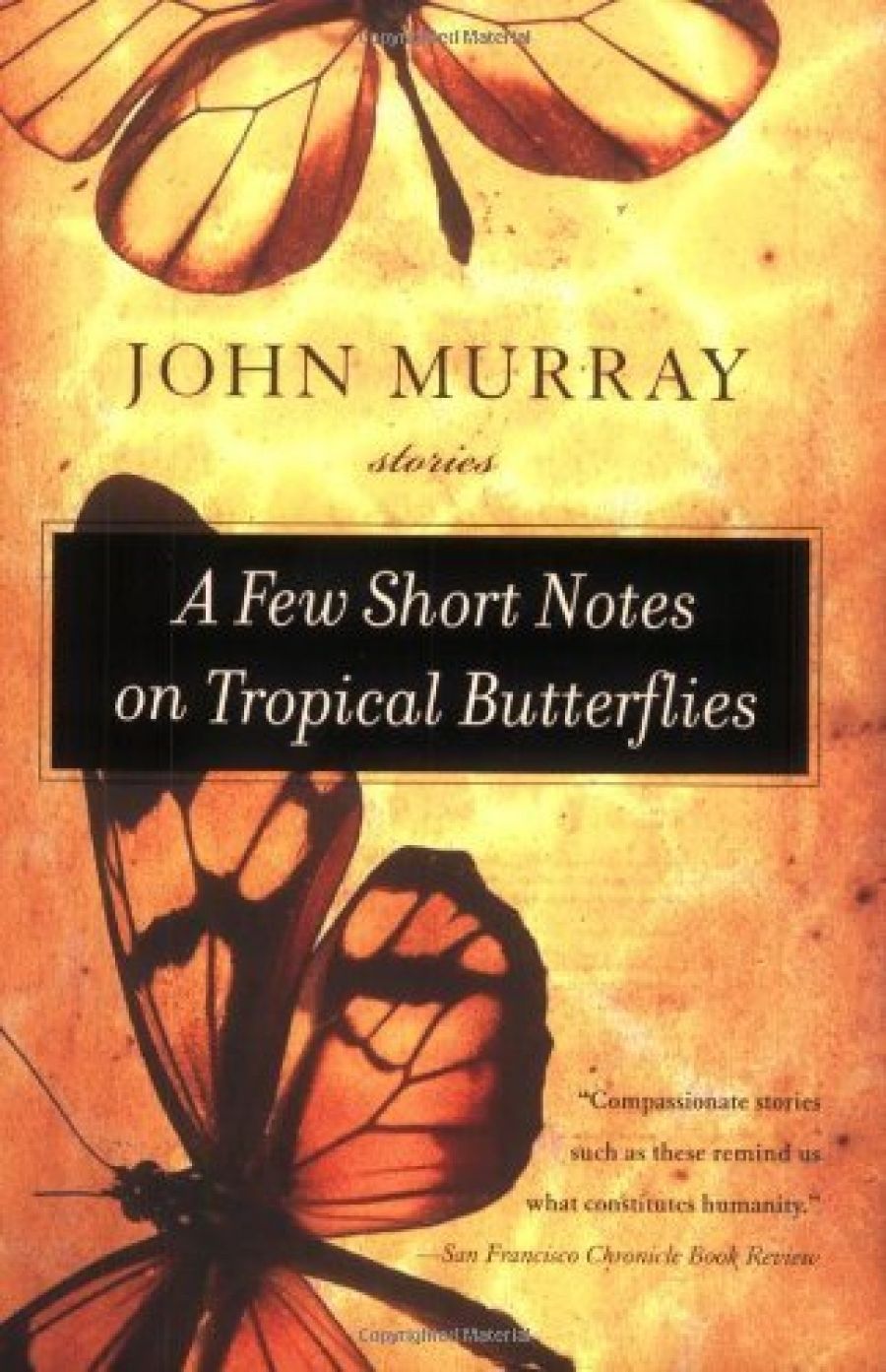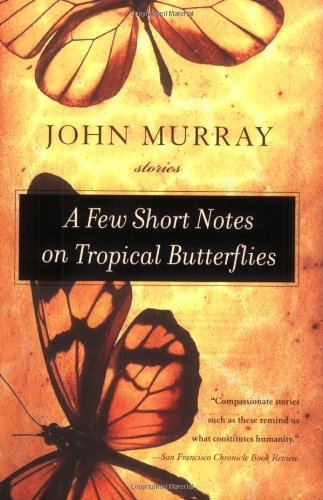
- Free Article: No
- Contents Category: Short Stories
- Review Article: Yes
- Article Title: Five-Finger Exercise with Doctors and Insects
- Online Only: No
- Custom Highlight Text:
Am I alone in becoming suspicious when a writer’s previous profession is the focus of a publicist’s blurb? To me, it smacks of desperation. ‘I can’t think of anything to say about this writing,’ such an approach confesses, ‘but let me tell you about the writer’s stellar career as a motor mechanic, or their prowess in tae kwon do, or their interest in growing orchids.’ Call me an old New Critic, but I prefer to read the work and to let the author lurk darkly in the background.
- Book 1 Title: A Few Short Notes on Tropical Butterflies
- Book 1 Biblio: Viking, $29.95 pb, 274 pp
- Book 1 Cover Small (400 x 600):

- Book 1 Cover (800 x 1200):

So I approached A Few Short Notes on Tropical Butterflies a little warily after reading that John Murray had trained as a medical doctor, a biographical detail I thought unnecessary. After reading his collection of short stories, however, I can understand why it was important to share this information about the author. All but one of the stories collected here include a doctor. They are about doctors or their spouses, only rarely about the medical profession. They are mostly about the individuals beneath the lab coats – their failures and triumphs as humans who happen to have taken the Hippocratic oath.
Murray’s biography also states that he is Australian, but only one story is set in Australia, while nearly all of them feature Asians – more specifically, displaced Indians – in their casts. We are kept in the dark about Murray’s origins – which is as it should be.
What is clear is that Murray knows what he’s doing with the short story form. Hardly a wrong note is sounded or tentative step taken in 274 pages. This is an assured début. Murray is of the ‘epiphanic’ school of short story writers who leave a narrative dangling at a moment when the protagonist has reached an understanding about himself, or his past, or the world. Often, this comes about after some meditation on the past, the evocation of a memory or, most typically, in the feeling of loss when thinking about the past.
This feeling of loss, for most of Murray’s main characters, is connected to the nature of the epiphany itself, to its ephemeral structure. For example, in the title story, a doctor nearing the end of his career sits by the sea musing on his father’s fascination with monarch butterflies:
The average life span of an adult monarch butterfly is four weeks. Four weeks to be a momentary burst of colour and to reproduce. There is a painful transience to it all. They are nothing but a drop of colour in the ocean. A fleeting moment that dazzles and blinds, and then is gone forever.
In a characteristic move, Murray shifts from the natural world outside the doctor to the inner one, ending the story with: ‘There are boats out at sea tonight, flashing mooring lights towards the shore. It is reassuring to see them out there. And in those distant glimmers, across the coal-dark water, I can see my own past, drifting just out of reach.’ There are echoes of Raymond Carver and James Joyce here in the strange combination of sadness and exhilaration.
Murray is good at endings, playing tricks with time and with narrative stance. At the end of the first story, ‘The Hill Station,’ an American doctor of Indian extraction, pregnant to a married colleague, tries to escape her past by returning to the India of her parents. Her mind is confused and her emotions jumbled as she mounts a bus climbing the hills outside Bombay. She finds herself sitting next to a young local who has ‘the air of an attentive nephew or tour guide’. At first, the Indian is depicted as a pest or solicitous clown. A rainstorm and a tragic accident on the road conspire to derail the doctor’s escape into the mountains, however, and there is a moment of revelation – a turning point reflected in the narrative as it suddenly takes a leap into the future:
Years later she would tell her daughter about that morning in the mountains. She would try and explain the moment when she had turned to walk back down the road toward the young man advancing up the hill toward her. Such a clear morning. Everything washed clean by the rain. That was how I met him, she would say, that was how I met the man who would be your father.
In ‘White Flour’, a doctor working in the Bombay slums is tracked down by his son. Although the son has been sent to India by his abandoned mother to deliver a letter to his father, he cannot bring himself to do so: Years later, he … will remember the sounds of the market through the open window. But it is the unopened letter that he will remember most clearly. It is heavy. The red ink is already smudged. The letter makes him feel as if anything is possible. The future and the past are in his hands. Everything is contained. Time feels as measured as the white flour drifting in the air and he understands, for a few slow minutes, the pleasure of not knowing.
If I have a serious reservation about these stories and their recurring obsession with doctors, Indians, insects and displacement, it is that the collection reads like a kind of five-finger exercise. Maybe Murray had to get these stories out of his system before tackling a major work, or maybe he will inaugurate a new genre of medical narratives. Only time and Murray’s next work will tell. But on the evidence of A Few Short Notes on Tropical Butterflies, I for one will be looking forward to it.


Comments powered by CComment